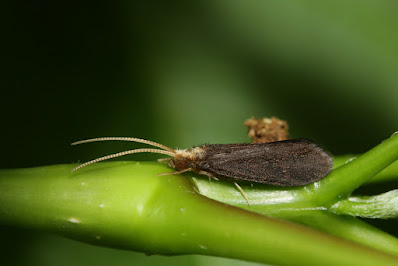" ... there is a microbial component inherent to all known systems on Earth with cumulative evidence supporting that niche-adapted microbial communities ('microbiomes') play unequivocally important roles in total ecosystem functioning
... Emerging ideologies such as "Planetary Health" and "OneHealth" emphasize these fundamental roles of microbial metabolic processes in supporting macroscopic reality at the systems-level, and further suggest that microorganisms should be viewed as unified constituents rather than as separate entities, as they have been historically regarded."
(Daisley et al.)
How likely is it that glyphosate, an agricultural product with the capacity to kill all green plants, except those genetically modified to resist it, will have no adverse effects on the health of other living things?
Because glyphosate disrupts a vital enzyme present in all plants, but entirely absent from animals, it has always claimed a reputation for safety. Indeed, the herbicide appears to have no acute toxic effects on animals (including humans). However, many kinds of micro-organism do have the enzyme targeted by glyphosate, and it is certainly harmful to them. By extension, the individual 'microbiomes' - the functional communities of diverse microbes which live around, on and inside all animals and plants - will be altered by this herbicide: the inevitable adverse health effects of this have never been considered.
We have only recently become aware of the functional interdependence between an organism and its microbiome. Micro-organisms play a key role in making nutrients available, in excluding pathogens, and in the immune systems of all higher forms of life.
Our crops need the support of a healthy microbiome in a healthy soil for their own health. In many GM and non-GM fields, the soil is subject to glyphosate from multiple sources, such as, spraying, GM root exudates, treated plant debris, and in some soils the release of accumulated mineral-bound herbicide residues.
Unaccountably, regulators seem to ignore the fact that fungi are plants and are a vital sector of the soil microbiome. The anti-fungal effects of glyphosate lead to long-term stunting of plant growth and a gradual reduction of crop yields.
Many plants also depend on visits from healthy insect pollinators. Insects with a glyphosate-damaged gut microbiome don't do much foraging, or help much with our food supply.
Since 2000, feed rations of UK farm animals, particularly poultry and dairy cattle, have included significant quantities of GM maize and soya, both likely to be laced with glyphosate which will damage to our livestock's gut microbiome and health. Indeed, the herbicide has been detected in the urine of up to 96% of farm animals.
Shockingly, animals have been exposed to glyphosate and other microbe-killing chemicals for so long that we no longer have access to any baseline healthy microbiomes with which to compare and investigate the extent of the damage. It's possible that there's already been a mass-extinction of the microbes essential to health.
Indirectly, humans are on the receiving end of all the glyphosate-induced disruption to the health of our plant- and animal-based foods.
Modern industrial-age populations have undergone a systematic depletion of their essential microflora due to the use of antibiotics and disinfectants. Pesticides in our food and water are just another nail in the microbiome coffin.
Glyphosate and its derivative, AMPA, were found frequently in the urine of dogs and cats too, reflecting the GM components in pet food brands. How healthy are our pets?
Regulators have defined an 'acceptable daily intake' (ADI) which is the amount of glyphosate judged safe to ingest on a daily basis over a lifetime. The ADI is one hundredth of the largest dose at which no adverse effect has been observed (i.e. the 'no observed adverse effect level' or NOAEL). Perplexingly, the US 'no adverse effect level' is three and a half times that in Europe.
The amount of glyphosate residues legally allowed by US regulators in food has increased dramatically over the years. These approved increases seem to be in response to commercial farming demands rather than any science-based safety considerations.
A recent study on rats fed three regulatory-relevant doses of glyphosate (the ADI, the EU NOAEL, and the US NOAEL) and using up-to-date analytical methods ('omics'), found alterations in the gut microbiome at all levels of the herbicide tested.
Glyphosate is not, of course, the only suspect but, with its use boosted by the widespread growing of herbicide-tolerant GM crops, is the most frequently applied agrichemical in the world. Much the same issues arise for all the other GM-linked weed-killers now emerging on the market [1,2,3].
Canadian scientists, Daisley et al., who have carried out a detailed analysis of the "Deteriorating microbiomes in agriculture" due to the "unintended effects of pesticides on microbial life", conclude there is a pressing need to reassess the use of agrichemcials "through the lens of microbial ecology and the ... effects on host (animal and plant) physiology". This reassessment should include the updating of the legislative framework and long-term studies to reveal subtle, accumulative consequences.
OUR COMMENT
To protect your long-term health , you might like to draw your regulators' attention to the call for legislative improvement to include all levels of microbiome damage.
If you're interested in knowing more about the effects of glyphosate on people, check out MICROBES ON THE GLYPHOSATE CHOPPING BLOCK - May 2022 (coming up next).
Background
[1]
DICAMBA - WORSE THAN GLYPHOSATE - October 2021
[2]
ISOXAFLUTOLE - THE NEXT HERBICIDE HEADACHE? - October 2021
[3]
2,4-D ON THE MENU TOO - October 2021
SOURCES:
- Brendan
A. Daisley, et al., 2021, Deteriorating microbiomes in
agriculture - the unintended effects of pesticides on microbial life,
Microbiome Research Reports
- Patrick
Holden, Are glyphosate-based herbicides poisoning us and the
environment? Sustainable Food Trust, 5.02.21
- Robin
Mesnage, et al., January 2021, Use of Shotgun Metagenomics and
Metabolomics to Evaluate the Impact of Glyphosate or Roundup MON 52276 on
the Gut Microbiota and Serum Metabolome of Sprague-Dawley Rats,
Environmental Health Perspectives
- Carey
Gillam, New glyphosate papers point to "urgency" for more
research on chemical impact to human health, USRTK, 23.11.20
- A.
H. C. van Bruggen, et al., October 2021, Indirect Effects of the
Herbicide Glyphosate on Plant, Animal and Human Health Through its Effects
on Microbial Communities, Frontiers in Environmental Science
- Glyphosate
and Roundup disturb gut microbiome and blood biochemistry at doses that
regulators claim to be safe, GM Watch 27.01.21
- Don
M. Huber, AG chemical and crop nutrient interactions - current update,
Fluid Fertilizer Foundation Proceedings Fluid Fertilizer Forum,
Scottsdale, February 2010
Photo Creative Commons







.jpg)






.jpg)












